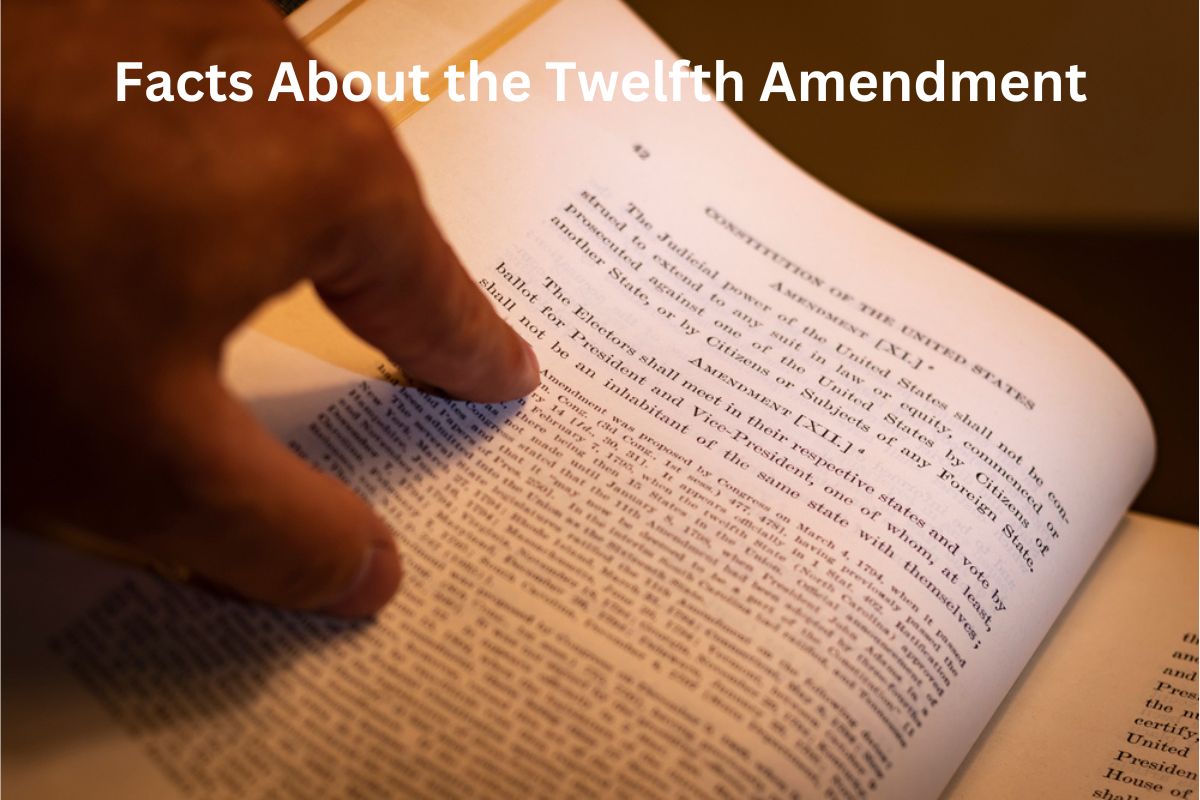The Twelfth Amendment to the United States Constitution is a critical component of the nation’s electoral process, as it establishes the procedure for electing the President and Vice President.
Ratified on June 15, 1804, the amendment was adopted in response to issues that arose during the elections of 1796 and 1800, which exposed flaws in the original Electoral College system.
Prior to the Twelfth Amendment, the Constitution’s Article II, Section 1 provided that each elector cast two votes for President, with the candidate receiving the most votes becoming President and the runner-up becoming Vice President. This system led to political rivals serving together, creating tension and inefficiency within the executive branch.
The Twelfth Amendment addressed these issues by requiring electors to cast separate ballots for President and Vice President. It also established a majority requirement for electoral votes, with the House of Representatives deciding the election for President, and the Senate for Vice President, in the absence of a majority.
Also Read: Facts About the Eleventh Amendment
By mandating separate ballots and reinforcing the role of the Electoral College, the Twelfth Amendment solidified the two-party system in the United States and helped to ensure that the President and Vice President would be from the same political party.
12th Amendment Facts
1. The Twelfth Amendment was ratified on June 15, 1804
The Twelfth Amendment was ratified on June 15, 1804, after being proposed by Congress on December 9, 1803. It was adopted to address issues that arose during the elections of 1796 and 1800.
Also Read: 13th Amendment Facts
2. The primary purpose of the Twelfth Amendment was to prevent electoral deadlocks and confusion.
The primary purpose of the Twelfth Amendment was to revise the procedure for electing the President and Vice President of the United States, in order to prevent electoral deadlocks and confusion.
3. The amendment restructured the Electoral College system
The amendment restructured the Electoral College system, which was originally established by Article II, Section 1 of the Constitution.
Under the original system, each elector cast two votes for President, with the candidate receiving the most votes becoming President and the runner-up becoming Vice President.
4. The Twelfth Amendment mandated that electors cast separate ballots for President and Vice President
The Twelfth Amendment mandated that electors cast separate ballots for President and Vice President, rather than voting for two presidential candidates. This change was designed to prevent situations where political rivals would end up serving together, as happened in the 1796 election.
5. The amendment requires that a candidate receive a majority of electoral votes
The amendment requires that a candidate receive a majority of electoral votes to be elected President or Vice President. If no candidate achieves a majority, the election is decided by the House of Representatives for President and the Senate for Vice President.
6. Each state’s delegation in the House of Representatives casts one vote
In the case of a contingent election for President, each state’s delegation in the House of Representatives casts one vote, with a majority of states (currently 26 out of 50) required for a candidate to be elected. This process remains in place until a President is elected.
7. Each senator has one vote
If no candidate receives a majority of electoral votes for Vice President, the Senate chooses the Vice President from the top two candidates. Each senator has one vote, and a majority of the whole number of senators is required to elect the Vice President.
8. Individuals who are constitutionally ineligible to serve as President are also ineligible to serve as Vice President
The Twelfth Amendment states that individuals who are constitutionally ineligible to serve as President are also ineligible to serve as Vice President. This includes individuals who do not meet the age, residency, and citizenship requirements outlined in Article II, Section 1 of the Constitution.
9. The amendment helped to solidify the two-party system
The amendment helped to solidify the two-party system in the United States by making it more likely that the President and Vice President would be from the same political party.
10. The Twelfth Amendment has been invoked twice in history
The Twelfth Amendment has been invoked twice in history. The first instance was in the 1824 presidential election, when the House of Representatives elected John Quincy Adams as President. The second time was in the 1836 vice-presidential election, when the Senate elected Richard Mentor Johnson as Vice President.
